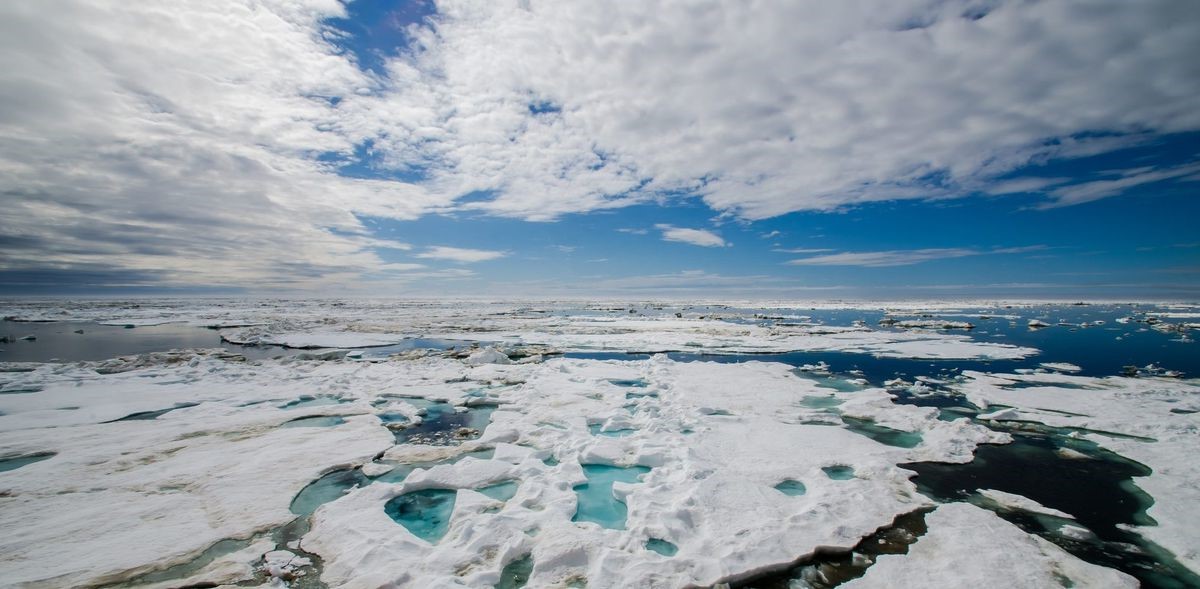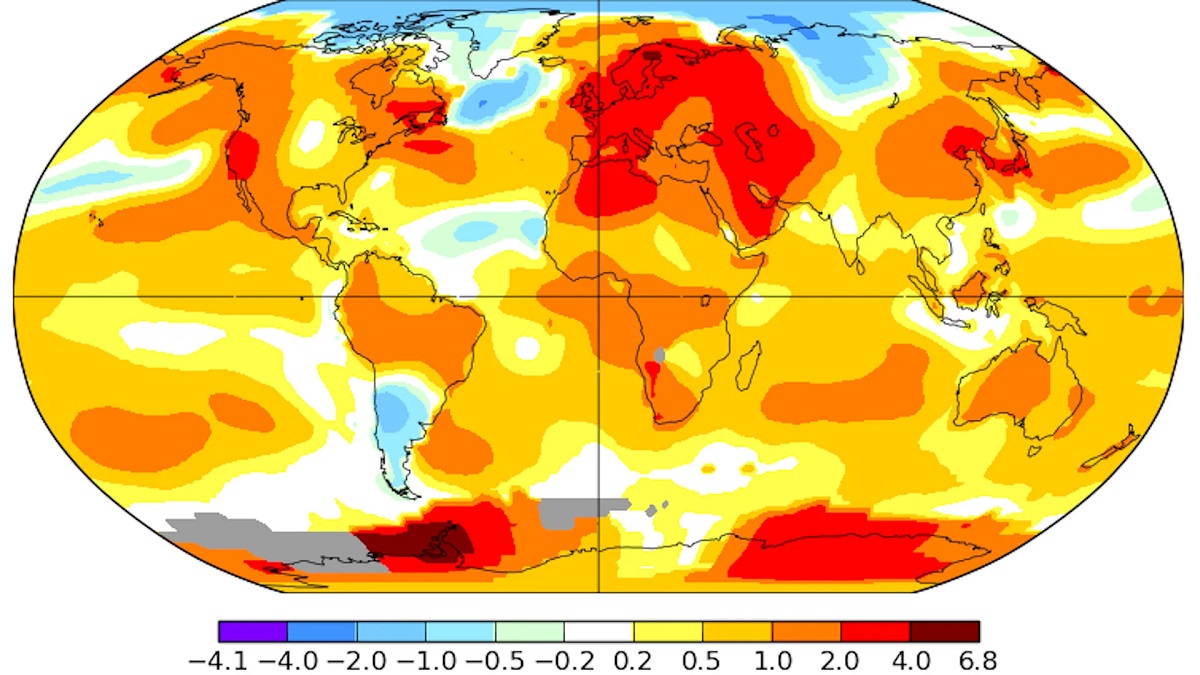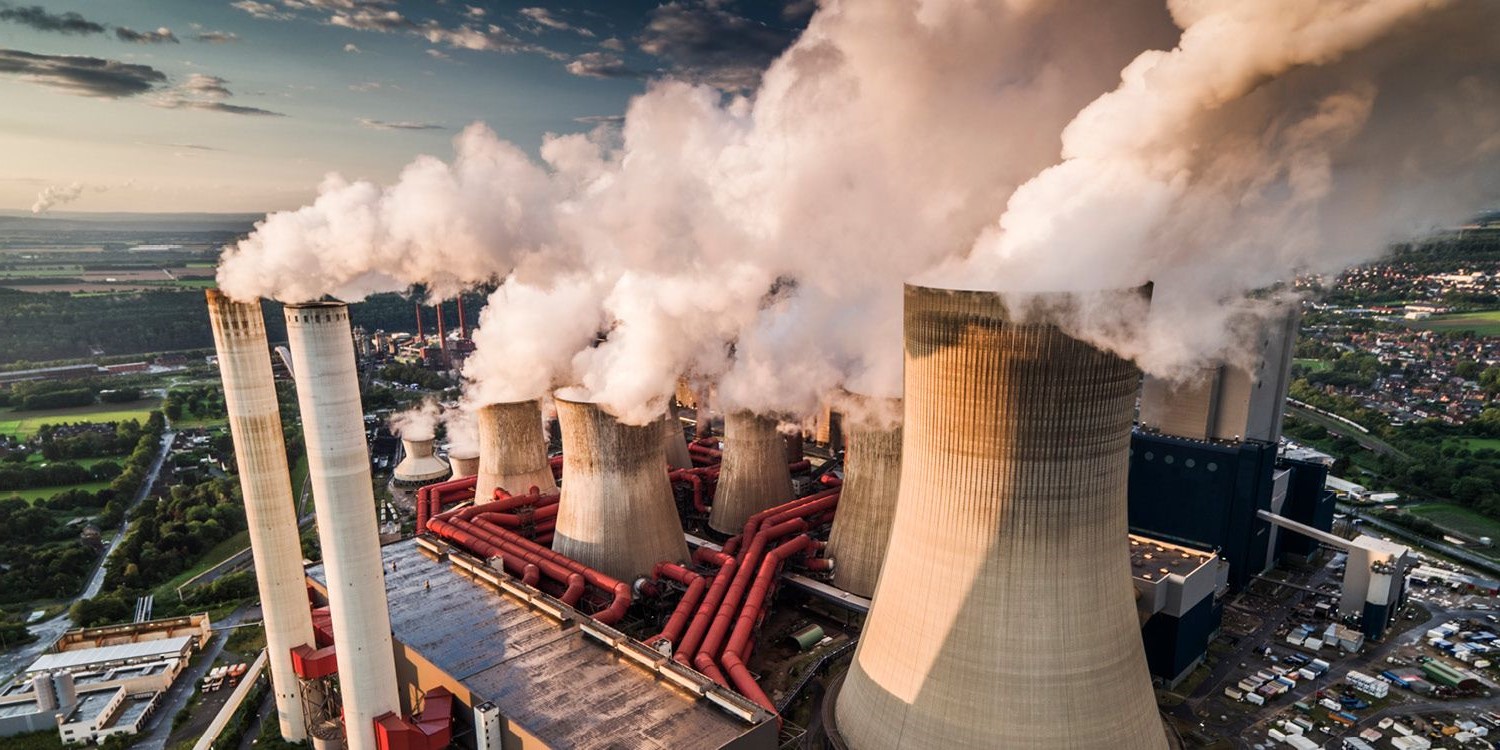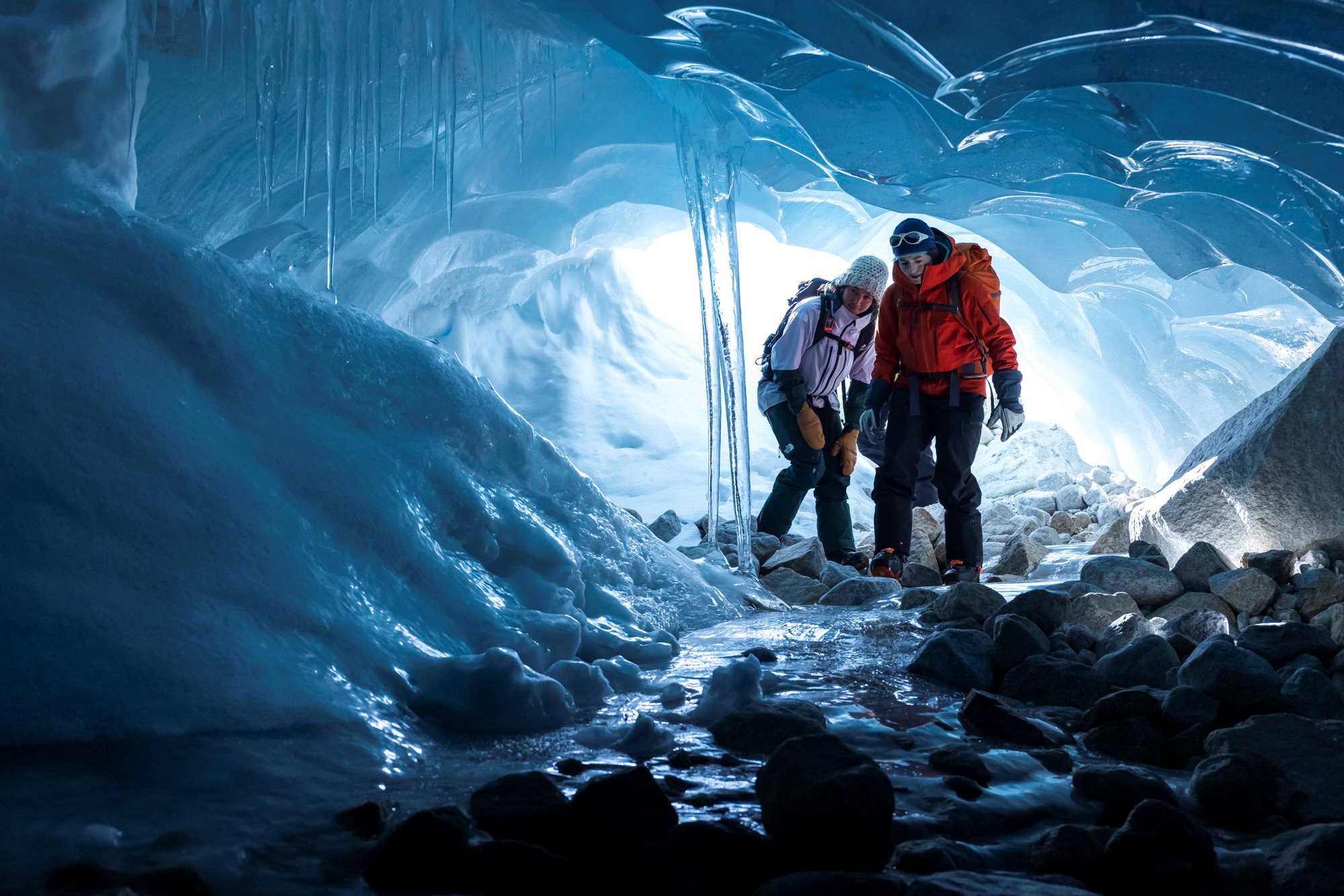Home>Weather and Climate>Global Surface Temperatures Since The Last Ice Age


Weather and Climate
Global Surface Temperatures Since The Last Ice Age
Modified: April 28, 2024
Explore the global surface temperatures since the last ice age and gain insights into the weather and climate changes over time. Understand the impact of weather and climate on our planet's history.
(Many of the links in this article redirect to a specific reviewed product. Your purchase of these products through affiliate links helps to generate commission for Temperatures.com, at no extra cost. Learn more)
Table of Contents
Introduction
The Earth's climate has undergone significant changes over millions of years, shaping the planet's landscapes and ecosystems. One of the most remarkable periods in Earth's climatic history is the Last Ice Age, which occurred approximately 11,700 years ago. This era, also known as the Pleistocene Epoch, was characterized by vast ice sheets covering large portions of the planet, drastically impacting global surface temperatures.
Understanding the dynamics of global surface temperatures since the Last Ice Age is crucial for comprehending the current climate patterns and predicting future trends. Throughout history, various natural and anthropogenic factors have influenced these temperatures, leading to fluctuations that have shaped the world we inhabit today. By examining the methods used to measure global surface temperatures and the impacts of temperature changes, we can gain valuable insights into the intricate relationship between climate and the environment.
The journey through the evolution of global surface temperatures since the Last Ice Age unveils a compelling narrative of the Earth's resilience and vulnerability. It is a story of adaptation, transformation, and the delicate balance between natural forces and human activities. As we delve into this exploration, we will uncover the profound implications of temperature variations on ecosystems, weather patterns, and the overall well-being of our planet.
In the subsequent sections, we will delve into the Last Ice Age, the factors influencing global surface temperatures, the methods employed to measure these temperatures, the changes observed since the Ice Age, and the far-reaching impacts of these fluctuations. By embarking on this journey, we will gain a deeper appreciation for the intricate interplay between climate and the Earth's ecosystems, fostering a greater understanding of our role in preserving the delicate equilibrium of our planet.
Read more: The Impact Of Global Warming Since 1998
The Last Ice Age
The Last Ice Age, also known as the Pleistocene Epoch, represents a pivotal chapter in Earth's climatic history. This period, which occurred approximately 2.6 million years ago and ended around 11,700 years ago, was characterized by extensive glaciation and profound alterations in global surface temperatures. The Ice Age was marked by the expansion of massive ice sheets across the Northern and Southern Hemispheres, leading to a significant drop in average global temperatures.
During the peak of the Last Ice Age, large portions of North America, Europe, and Asia were engulfed by colossal ice sheets, transforming the landscape and altering the distribution of flora and fauna. The impact of the glacial advance was not limited to land; it extended to the world's oceans, influencing sea levels and ocean currents. The profound cooling of the planet during this era had far-reaching consequences, shaping the geographical features and ecological systems that exist today.
The Last Ice Age was characterized by cyclical fluctuations in temperature, with distinct glacial and interglacial periods. These fluctuations were driven by complex interactions between various factors, including changes in the Earth's orbit, atmospheric composition, and solar radiation. The interplay of these elements contributed to the waxing and waning of ice sheets, resulting in dynamic shifts in global surface temperatures.
As the Last Ice Age drew to a close, the planet underwent a gradual warming phase, leading to the retreat of the massive ice sheets and the emergence of the modern climate patterns. This transition marked a pivotal juncture in Earth's climatic evolution, setting the stage for the diverse ecosystems and weather systems that define the present era.
The legacy of the Last Ice Age endures in the form of glacial landforms, geological imprints, and the genetic adaptations of species that survived the harsh conditions. The profound impact of this epoch reverberates through the intricate tapestry of Earth's history, serving as a testament to the resilience of the planet in the face of profound climatic upheavals.
The Last Ice Age stands as a testament to the dynamic nature of Earth's climate, showcasing the profound influence of temperature fluctuations on the planet's ecosystems and geological features. By unraveling the mysteries of this transformative era, we gain valuable insights into the intricate interplay between global surface temperatures and the ever-evolving tapestry of life on Earth.
Factors Affecting Global Surface Temperatures
A myriad of natural and anthropogenic factors exert influence on global surface temperatures, shaping the intricate tapestry of Earth's climate. These factors, operating on various spatial and temporal scales, contribute to the dynamic fluctuations observed in global temperatures. Understanding the interplay of these elements is crucial for unraveling the complexities of climate dynamics and their far-reaching implications.
-
Solar Radiation: The primary source of energy for Earth's climate system is solar radiation. Variations in solar output, driven by cyclic changes in the Sun's activity, can impact global surface temperatures. Solar cycles, characterized by fluctuations in sunspot activity and solar irradiance, can influence the amount of energy reaching the Earth, thereby contributing to temperature variations.
-
Atmospheric Composition: The composition of the Earth's atmosphere plays a pivotal role in regulating global surface temperatures. Greenhouse gases, such as carbon dioxide (CO2), methane (CH4), and water vapor, act as thermal insulators, trapping heat within the atmosphere. Human activities, including the burning of fossil fuels and deforestation, have led to an increase in greenhouse gas concentrations, intensifying the greenhouse effect and contributing to global warming.
-
Oceanic Circulation: The vast network of ocean currents and circulation patterns plays a crucial role in redistributing heat across the planet. Variations in oceanic circulation, such as El Niño and La Niña events, can influence regional and global temperature patterns. These phenomena, driven by interactions between the ocean and the atmosphere, can lead to anomalous temperature fluctuations with widespread impacts on weather systems.
-
Land Use Changes: Human alterations to the Earth's land cover, including urbanization, deforestation, and agricultural practices, can influence local and regional surface temperatures. Urban heat islands, characterized by elevated temperatures in urban areas compared to surrounding rural regions, are a result of human-induced modifications to the landscape and can contribute to localized warming.
-
Volcanic Activity: The eruption of volcanoes can inject large quantities of ash and aerosols into the atmosphere, leading to temporary cooling effects on global temperatures. The release of sulfur dioxide during volcanic eruptions can form sulfate aerosols, which reflect solar radiation and contribute to a cooling of the Earth's surface for a limited duration.
-
Orbital Variations: Cyclical variations in the Earth's orbit, known as Milankovitch cycles, can influence the distribution of solar radiation received by the planet. These orbital parameters, including eccentricity, axial tilt, and precession, can lead to long-term changes in the amount and distribution of solar energy reaching the Earth, contributing to climatic variations over geological timescales.
The intricate interplay of these factors underscores the multifaceted nature of global surface temperature dynamics. By comprehending the influence of these elements, we can gain valuable insights into the complexities of Earth's climate system and the profound impacts of temperature fluctuations on the planet's ecosystems and human societies.
Methods of Measuring Global Surface Temperatures
Accurately measuring global surface temperatures is essential for understanding climate trends and assessing the impacts of temperature variations on the environment. Over the years, scientists have developed sophisticated methods to capture and analyze temperature data from diverse geographical regions, providing valuable insights into the complex dynamics of Earth's climate. These methods encompass a range of technological approaches and observational techniques, each offering unique advantages in monitoring and interpreting global surface temperatures.
-
Surface Thermometers: One of the most traditional methods of measuring global surface temperatures involves the use of surface thermometers. These instruments are strategically positioned across the globe, providing localized temperature readings at ground level. The data collected from surface thermometers are instrumental in constructing historical temperature records and identifying regional temperature anomalies.
-
Satellite Remote Sensing: Satellite-based remote sensing technologies have revolutionized the monitoring of global surface temperatures. Advanced satellite instruments equipped with infrared sensors and radiometers can capture thermal radiation emitted by the Earth's surface, enabling the derivation of comprehensive temperature datasets on a global scale. Satellite remote sensing offers the advantage of wide spatial coverage and the ability to monitor remote or inaccessible regions, contributing to a more holistic understanding of global temperature patterns.
-
Ocean Buoy Networks: Given the significant influence of oceans on global climate, the deployment of ocean buoy networks has become integral to measuring sea surface temperatures. These buoys, equipped with precise temperature sensors, continuously monitor the thermal characteristics of ocean waters, providing crucial data for assessing oceanic temperature trends and their impact on climate dynamics.
-
Reanalysis Datasets: In addition to direct measurements, reanalysis datasets play a pivotal role in synthesizing historical temperature records and atmospheric variables. Utilizing advanced computational models, reanalysis datasets integrate diverse sources of observational data, including surface measurements, satellite observations, and weather balloon data, to generate comprehensive reconstructions of global temperature fields. These datasets facilitate the analysis of long-term temperature trends and the identification of climatic patterns on a global scale.
-
Climate Models and Simulations: Climate models, powered by complex mathematical algorithms and physical principles, enable the simulation of global temperature patterns under varying scenarios. These models incorporate a multitude of factors, including greenhouse gas concentrations, solar radiation, and atmospheric dynamics, to project future temperature trends and assess the potential impacts of climate change. By integrating observational data with predictive simulations, scientists can enhance their understanding of global surface temperatures and anticipate potential climate scenarios.
The integration of these diverse methods and technologies has significantly advanced our capacity to measure and analyze global surface temperatures, fostering a comprehensive understanding of climate dynamics and their implications for the planet. By leveraging these innovative approaches, researchers can continue to unravel the complexities of Earth's climate system and contribute to informed decision-making in addressing contemporary environmental challenges.
Changes in Global Surface Temperatures Since the Last Ice Age
The transition from the Last Ice Age to the present era has been marked by profound shifts in global surface temperatures, shaping the climatic landscape and influencing the dynamics of Earth's ecosystems. Following the glacial retreat approximately 11,700 years ago, the planet embarked on a trajectory of gradual warming, leading to notable changes in temperature patterns across diverse geographical regions.
During the early stages of the post-glacial period, known as the Holocene Epoch, global surface temperatures experienced a discernible uptick, heralding the onset of a warmer climate regime. This warming trend, characterized by the gradual recession of ice sheets and the expansion of temperate environments, facilitated the reconfiguration of terrestrial and aquatic ecosystems. The rise in global temperatures during this period fostered the proliferation of diverse flora and fauna, contributing to the establishment of the rich biodiversity observed in contemporary ecosystems.
The Holocene Epoch witnessed fluctuations in global surface temperatures, encompassing distinct climatic phases such as the Holocene Climatic Optimum and the Little Ice Age. These variations, driven by natural climatic oscillations and external forcings, underscore the dynamic nature of global temperature patterns. The Holocene Climatic Optimum, occurring approximately 6,000 to 9,000 years ago, represented a phase of heightened temperatures, fostering favorable conditions for human civilizations to thrive and expand.
In contrast, the Little Ice Age, spanning from the 14th to the 19th century, was characterized by a cooling of global surface temperatures, leading to widespread impacts on agriculture, ecosystems, and human societies. The culmination of these temperature fluctuations reflects the intricate interplay of natural climatic processes and external influences, underscoring the multifaceted nature of global temperature dynamics.
The advent of the Industrial Revolution marked a pivotal juncture in the trajectory of global surface temperatures, heralding a period of accelerated warming driven by human activities. The combustion of fossil fuels, industrial processes, and land-use changes have contributed to a substantial increase in greenhouse gas concentrations, intensifying the greenhouse effect and amplifying global temperatures. This anthropogenic influence has led to unprecedented rates of temperature rise, culminating in the phenomenon of modern climate change.
The culmination of these temperature fluctuations reflects the intricate interplay of natural climatic processes and external influences, underscoring the multifaceted nature of global temperature dynamics. The trajectory of global surface temperatures since the Last Ice Age serves as a testament to the complex interplay of natural and anthropogenic factors, shaping the contemporary climate landscape and underscoring the imperative of proactive measures to mitigate the impacts of climate change.
Impacts of Global Surface Temperature Changes
The fluctuations in global surface temperatures since the Last Ice Age have exerted profound impacts on Earth's ecosystems, weather patterns, and human societies. These temperature variations have triggered a cascade of transformative effects, reshaping the environmental landscape and influencing the delicate balance of life on the planet.
Ecological Disruptions
The shifts in global surface temperatures have significantly impacted ecological systems, leading to alterations in the distribution and behavior of plant and animal species. Changes in temperature regimes have influenced the timing of biological events, such as flowering, migration, and hibernation, disrupting established ecological rhythms. These disruptions have cascading effects on food webs, species interactions, and the overall functioning of ecosystems, posing challenges to the adaptability of flora and fauna in the face of rapid climate change.
Weather Extremes
The ramifications of global temperature fluctuations are evident in the intensification of weather extremes, including heatwaves, droughts, and intense precipitation events. Rising temperatures contribute to the amplification of extreme weather phenomena, heightening the frequency and severity of weather-related disasters. These events pose significant risks to human settlements, agricultural productivity, and critical infrastructure, underscoring the vulnerability of communities to the impacts of shifting climate patterns.
Sea Level Rise
The warming of global surface temperatures has catalyzed the melting of polar ice caps and glaciers, contributing to the rise in sea levels. This phenomenon poses a direct threat to coastal regions, leading to inundation of low-lying areas, erosion of shorelines, and salinization of freshwater resources. The implications of sea level rise extend beyond environmental concerns, encompassing socioeconomic repercussions for coastal communities and necessitating adaptive measures to mitigate the impacts of encroaching waters.
Read more: Global Temperature Trends
Human Health
The impacts of global temperature changes extend to human health, manifesting in diverse ways such as heat-related illnesses, vector-borne diseases, and compromised air quality. Rising temperatures create conducive environments for the proliferation of disease vectors, amplifying the prevalence of vector-borne illnesses such as malaria, dengue fever, and Lyme disease. Additionally, heatwaves and air pollution associated with elevated temperatures pose risks to respiratory health, particularly affecting vulnerable populations.
Societal and Economic Disruptions
The far-reaching consequences of global temperature fluctuations reverberate through societal and economic domains, influencing livelihoods, food security, and resource availability. Agricultural systems face challenges posed by shifting climate patterns, impacting crop yields, livestock productivity, and the resilience of farming communities. Furthermore, the implications of temperature changes extend to economic sectors such as tourism, fisheries, and infrastructure development, necessitating adaptive strategies to mitigate the socio-economic disruptions arising from climate variability.
The multifaceted impacts of global surface temperature changes underscore the urgency of proactive measures to address climate change and its repercussions. By comprehending the far-reaching implications of temperature fluctuations, societies can strive to implement mitigation and adaptation strategies, fostering resilience in the face of evolving climate dynamics. The imperative of collective action to address the impacts of global temperature changes is underscored by the imperative of safeguarding the well-being of current and future generations in a rapidly changing world.
Conclusion
The journey through the evolution of global surface temperatures since the Last Ice Age unveils a compelling narrative of the Earth's resilience and vulnerability. From the expansive ice sheets of the Pleistocene Epoch to the contemporary era of accelerated warming, the planet has borne witness to dynamic shifts in temperature patterns, shaping the intricate tapestry of ecosystems, weather phenomena, and human societies. The interplay of natural climatic processes and anthropogenic influences has underscored the multifaceted nature of global temperature dynamics, emphasizing the imperative of proactive measures to address the impacts of climate change.
As we reflect on the trajectory of global surface temperatures, it becomes evident that the ramifications of temperature fluctuations extend far beyond environmental concerns. The ecological disruptions, intensification of weather extremes, sea level rise, impacts on human health, and societal and economic disruptions underscore the far-reaching implications of shifting climate patterns. These multifaceted impacts necessitate a holistic approach to addressing climate change, encompassing mitigation, adaptation, and international collaboration to foster resilience in the face of evolving environmental challenges.
The imperative of collective action to address the impacts of global temperature changes is underscored by the imperative of safeguarding the well-being of current and future generations in a rapidly changing world. By leveraging scientific insights, technological innovations, and sustainable practices, societies can strive to mitigate the impacts of climate change and foster a harmonious coexistence with the planet. The narrative of global surface temperatures serves as a call to action, inspiring concerted efforts to preserve the delicate equilibrium of Earth's ecosystems and secure a sustainable future for generations to come.
In embracing the complexities of climate dynamics and the profound impacts of temperature fluctuations, we embark on a collective journey toward environmental stewardship and resilience. The narrative of global surface temperatures since the Last Ice Age serves as a testament to the interconnectedness of all life on Earth, compelling us to forge a path of sustainability, conservation, and harmonious cohabitation with the planet we call home.













